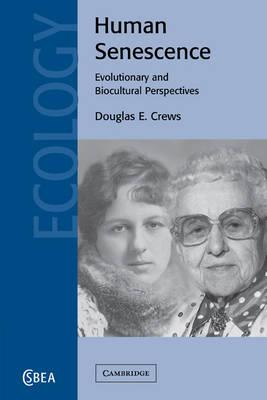
Human Senescence
Evolutionary and Biocultural Perspectives
Seiten
2011
Cambridge University Press (Verlag)
978-0-521-18231-7 (ISBN)
Cambridge University Press (Verlag)
978-0-521-18231-7 (ISBN)
It is only comparatively recently in evolutionary terms that humans have developed late-life survival. Looking at anthropological, gerontological and biocultural evidence, Human Senescence is a text that explores why humans age only slowly over our lifespan, and what impacts this has on our health and lives today.
Much research on the biology of senescence is on cell-lines, nematodes or fruit flies, that are only of peripheral relevance to the problems encountered in humans. Human Senescence is a text which reviews the evolutionary biology of human senescence and life span, and the evolutionarily recent development of late-life survival. It examines how human patterns of and variability in growth and development have altered later life survival probabilities and competencies, and how survival during mid-life contributes to senescent dysfunction and alteration. Discussing possibilities of further extending human life span, it gives a better understanding of how humans came to senesce as slowly as we do over our lifespan. Bringing together gerontological, anthropological and biocultural research, it explores human variation in chronic disease, senescence and life span as outcomes of early life adaptation and the success of humankind's sociocultural evolution. It is a benchmark publication for all interested in how and why we age.
Much research on the biology of senescence is on cell-lines, nematodes or fruit flies, that are only of peripheral relevance to the problems encountered in humans. Human Senescence is a text which reviews the evolutionary biology of human senescence and life span, and the evolutionarily recent development of late-life survival. It examines how human patterns of and variability in growth and development have altered later life survival probabilities and competencies, and how survival during mid-life contributes to senescent dysfunction and alteration. Discussing possibilities of further extending human life span, it gives a better understanding of how humans came to senesce as slowly as we do over our lifespan. Bringing together gerontological, anthropological and biocultural research, it explores human variation in chronic disease, senescence and life span as outcomes of early life adaptation and the success of humankind's sociocultural evolution. It is a benchmark publication for all interested in how and why we age.
Preface; 1. Introduction and background; 2. Evolutionary and biological theories of senescence; 3. Human variation: growth, development, life history and senescence; 4. Human variation: chronic diseases, risk factors and senescence; 5. Human life span and life extension; 6. Discussion and perspectives; References.
| Erscheint lt. Verlag | 17.2.2011 |
|---|---|
| Reihe/Serie | Cambridge Studies in Biological and Evolutionary Anthropology |
| Zusatzinfo | Worked examples or Exercises |
| Verlagsort | Cambridge |
| Sprache | englisch |
| Maße | 152 x 229 mm |
| Gewicht | 450 g |
| Themenwelt | Studium ► 1. Studienabschnitt (Vorklinik) ► Histologie / Embryologie |
| Naturwissenschaften ► Biologie ► Humanbiologie | |
| Sozialwissenschaften ► Ethnologie | |
| Sozialwissenschaften ► Soziologie | |
| ISBN-10 | 0-521-18231-X / 052118231X |
| ISBN-13 | 978-0-521-18231-7 / 9780521182317 |
| Zustand | Neuware |
| Haben Sie eine Frage zum Produkt? |
Mehr entdecken
aus dem Bereich
aus dem Bereich
Zytologie, Histologie und mikroskopische Anatomie
Buch | Hardcover (2022)
Urban & Fischer in Elsevier (Verlag)
CHF 75,60
Gewebelehre, Organlehre
Buch | Spiralbindung (2024)
Urban & Fischer in Elsevier (Verlag)
CHF 34,95


